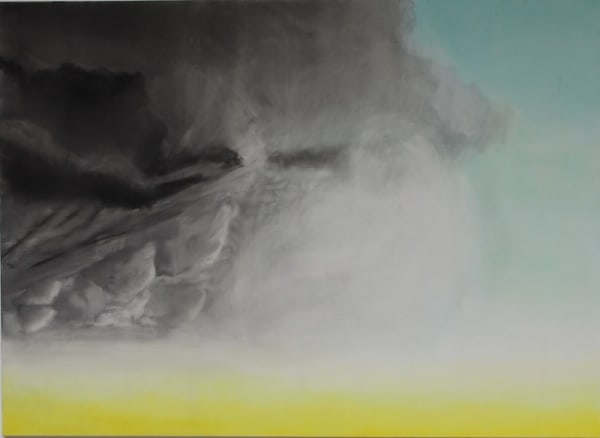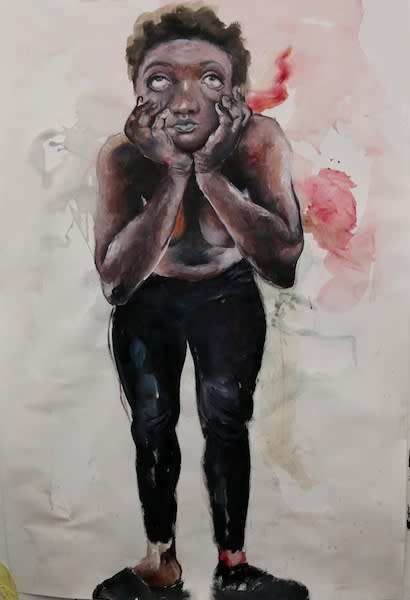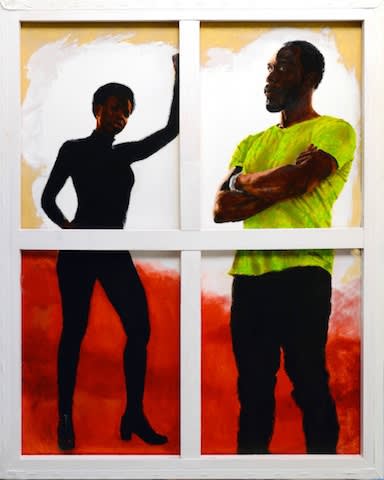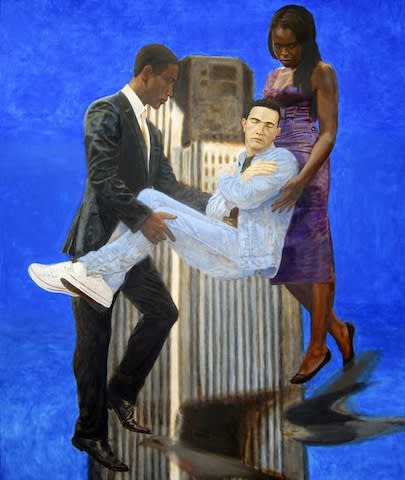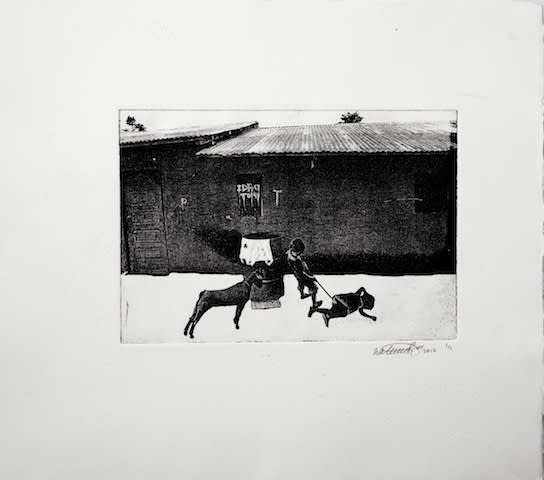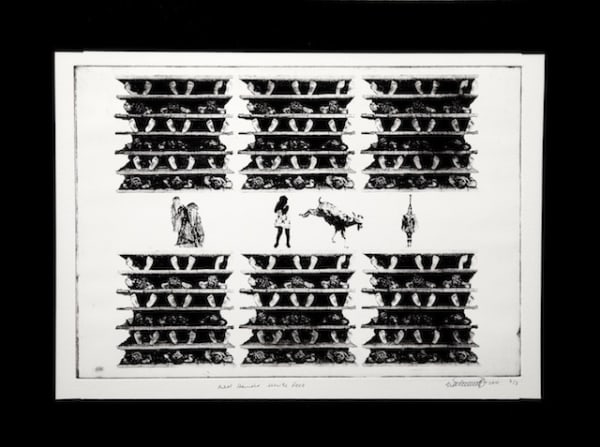From May 21 to 23, Omenka Gallery will present Mapping Histories, Constructing Realities as its presentation at Art15. The exhibition showcases the work of some of the biggest names in contemporary African art, who despite their divergent yet complimentary influences arising from living and working outside the continent, remain true to their roots in their chosen media. It features 4 well-known contemporary African artists; London-based Ghanaian artist Kimathi Donkor, Gabonese artist Nathalie Mba Bikoro who lives and works in London, and Nigerian Nengi Omuku, who studied in London but lives in Port Harcourt, and her compatriot Ndidi Emefiele, presently studying for her MFA at the Slade.
The artists are carefully selected from Anglophone and Francophone countries, a huge part of their differences arising from their varied colonial influences-language itself a clearly recognizable difference. Though these artists collectively share Africa as their home, the exhibition draws its strengths from their individual experiences and the particular socio-political realities of the countries they reside in.
The 4 artists are similar in their primary points of investigation. Kimathi Donkor is a history painter for the post-modern age. He sees himself as building upon the narrative, portraiture legacies of Benin and Ife art. His ravishingly rendered figurative works are often complex conundrums designed to reveal the hidden histories of Africa and its Diaspora. His paintings, whilst referencing key works from the Western canon, also create new interpretations and imaginary spaces that envisage compelling individuals from both recent and more distant history.
Likewise, Nathalie Mba Bikoro's interdisciplinary practices incorporate a synthesis of collaborative engagements, international community dialogue, body politics and development across continents through a merging of creative practices in live art performance, sound and vocal art, film, literature and museum archives, body art, installation and mixed media.
Her creative practices are informed by discourses of histories, archives and theories on postcolonialism, diaspora, migration, identities, afro and alter modernism and culture. Her work reveals and creates moments of exploration of creolized identity, heritage, memory and homeland. Here, the artist investigates colonial past, tyranny, dictates of gender, traditions and mythologies.
Emefiele also adopts the historic practice of using the body symbolically in visual art, dating back to the sculptures and paintings of ancient Egyptians, whose "god-like" pharaoh is often depicted much larger than ordinary mortals, his erect, stiff posture signifying his unyielding majesty and authority. The heads of her female figures are large, bearing semblance to those of traditional Yoruba sculptures, carved disproportionately to other parts of the human body to emphasize its function as the seat of wisdom, upon which the destiny of an individual is carried. Here, the female body becomes a contested site and an important source of information, through which she challenges established notions of beauty.
Additionally, the artist incorporates Ankara fabrics and other signifiers of consumerism like disused disk plates, which she employs as eyeglasses for her subjects. The disks are ruptured in several places-metaphors for the shattering of poverty, as well as racial, sexual, and class barriers, consequences of the colonial past.
Nengi Omuku provides a strong unifying element for all the work presented. Her paintings function as a metaphor alluding to wider themes of difference, understanding and a mutual belonging. Through colour, she explores the supposition that the human figure can be transformed based on the premise that things could not only look but also be otherwise. The release from the physical form has led her into new territory, a moment-by-moment expression of beings that have been transformed from their present reality, reanimated through colour and marks.
It is her desire to convey portraits: presences floating through active spaces, presences that have the aspiration of becoming events in their own right. In other aspects of her work, she frequently explores the encounter-what happens when different forms meet, and in particular, the escape the bodies inhabit.
